
Published by Struik Nature (an imprint of Random House Struik (Pty) Ltd)
Reg. No. 1966/003153/07
The Estuaries No. 4, Oxbow Crescent, Century Avenue, Century City, 7441
PO Box 1144, Cape Town, 8000 South Africa
Visit www.randomstruik.co.za and join the Struik Nature Club for updates, news, events and special offers.
First published in 2013 by Shark Cornwall, Dulverton House, Crooklets, Bude, Cornwall, EX23 8NE, United Kingdom
New edition published in 2014 by Struik Nature
Copyright in text, 2013, 2014: Richard Peirce
Copyright in photographs, 2013, 2014: Jacqui Peirce or as indicated under Picture credits
Copyright in map, 2014: MapStudio 2014
Copyright in published edition, 2014: Random House Struik (Pty) Ltd
Publisher: Pippa Parker
Editor: Helen de Villiers
Designer: Janice Evans
All rights reserved. No part of this publication may be reproduced, stored in a retrieval system, or transmitted, in any form or by any means, electronic, mechanical, photocopying, recording or otherwise, without the prior written permission of the copyright owner(s).
ISBN 978-1-77584-178-4
ePub 978-1-77584-179-1
PDF 978-1-77584-180-7
PICTURE CREDITS
Covers: Joe Hilley (front); Mario Moreno/South Cape Images (back)
Inside pages: Anne Albert: (inset)
DEDICATION
This book is dedicated to Higgins and Lady and to all the rhinos, dead and alive, that have been attacked by poachers. It is also dedicated to the brave men and women who work on the front line trying to protect animals some of whom have been killed doing their jobs. We owe it to the human and rhino victims to develop effective conservation measures to ensure the survival of the remaining rhino species in the wild.
Contents

Forewords
ALL TRADE IS BASED ON SUPPLY AND DEMAND. When there is a demand there will always be a supply. Prohibition in the USA, the global drugs trade, and human trafficking, etc., all had, and have, massive and sophisticated police resources deployed against them, but the supply has continued and often increased.
The trade in wildlife and animal body parts is no different. Rhino horn, ivory, shark fins, and others continue to be harvested legally and illegally to satisfy an ever growing demand. The lessons of history indicate that we will not save Earths wildlife by trying to regulate or stop supply. The only thing that will ultimately prove effective is to regulate demand.
The conservation of our wild fauna and flora rests on a highly complex set of issues. However, for many animal species the demand comes from a limited part of the world, and to a large degree from one country within that area China. If conservation NGOs, CITES, the IUCN and others turned their attention to stopping demand, rather than tinkering with supply, their efforts would be more effective. Humans have always hunted wild animals and eaten parts of them. However, the difference today is that many of these species face extinction, and often consumption is based on ancient beliefs, reinforced by spurious medical claims. This mistaken belief and the fact that targeted species may now face extinction in the wild constitute powerful arguments; the global conservation community should deploy them in Southeast Asia to stop the demand.
 JACQUI PEIRCE
JACQUI PEIRCE
HACKING BODY PARTS OFF LIVING ANIMALS for calculated financial gain places humans in a behavioural class on their own at the bottom of the pile.
Every year millions of sharks have their fins cut off while theyre still alive, rhinos are darted and immobilised while their horns are hacked off, bears have catheters inserted into their gall bladders to remove bile, and the list goes on
In 2013, 1,004 rhinos were poached in South Africa, and I have often heard the struggle against poaching referred to as a war. The rangers, park wardens, police and military fighting the poachers cannot win the war as long as the value of rhino horn is so high that people are prepared to risk their lives to acquire it. What makes the war even more uneven is that the poachers can make the rules up as they go along, while those on the other side have to play by the book.
Rhinos have been on our planet for around 50 million years; by comparison, humans have been on Earth for 10 minutes. If humans continue to live unsustainably, then perhaps they will wipe themselves out before they succeed in eliminating the rhino, which may just be around in another 50 million years, long after humans have disappeared!
The Poachers Moon is the story of rhino poaching on three game farms in South Africas Western Cape. It is my tribute to those who fight to safeguard the targeted, vulnerable species on our planet, and to Higgins and Lady two rhinos that have survived the slaughter to see another dawn.
 RICHARD PEIRCE
RICHARD PEIRCE
Acknowledgements
I WOULD LIKE TO THANK THE FOLLOWING for their help in turning The Poachers Moon from a story that I wanted to write into a reality:
Anne Albert; Lawrence Anthony (author of The Last Rhinos); Johan Botma, Denis Pothas, Deon and Chantelle from Fairy Glen; Eugene Braun for the original front cover illustration, now appearing on ; Wilfred Chivell and Brenda du Toit for help and advice on legal issues; Rudi Coertzen and Gerard Scholtz for their excellent camera work; Trevor Carnaby (author of Beat About The Bush); Tim Davison who edited the original manuscript; Searl Derman, Mandi Jarman and the staff at the Aquila Game Reserve; Denise Headon and Madelein Marais who made up for my keyboard ineptitude; Damien Vergnaud, Wilna Paxton and the staff at the Inverdoorn Game Reserve; Esmond Bradley Martin, Gerard Scholtz, Dr Gerhard Steenkamp; Clive and Anton Walker (authors of The Rhino Keepers).
Special thanks must go to Pieter de Jager, the owner of the Fairy Glen Reserve, who gave unstintingly of his time to help me, and Dr Jana Pretorius who was kind enough to read the book, even though I know it upset her, to give me a factual check.
draws heavily on Killing for Profit, which is an excellent work by Julian Rademeyer. The Poachers Moon is the story of two animals that survived attacks in the Western Cape, and others who didnt. For the serious student of rhino poaching I unreservedly recommend Rademeyers book.
Finally a huge thank you to my wife Jacqui who took lots of the photographs and worked with me on many aspects of the book.
RHINOS WHITE AND BLACK
There are two types of rhinoceros in southern Africa: the square-lipped or white rhinoceros (Ceratotherium simum), as seen below, and the hook-lipped or black rhinoceros (Diceros bicornis). From their earlier widespread occurrence across Africa, both white and black rhinos numbers have been severely impacted by poaching and they are now restricted to a fraction of their original distribution, mostly on game reserves. This account deals principally with rhinos re-introduced to three game reserves in the Western Cape, and all are white rhinos.
Next page
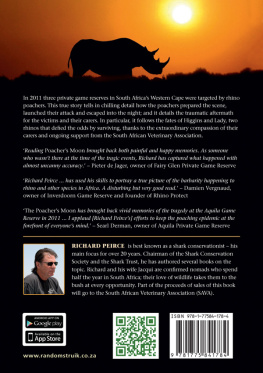

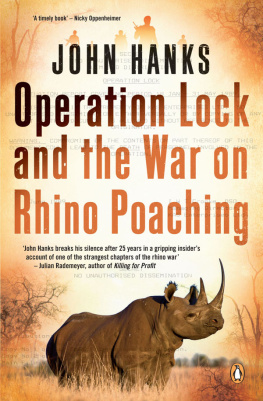

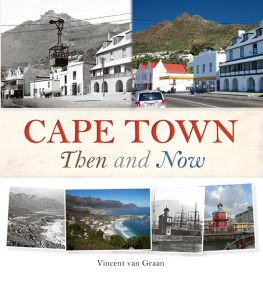



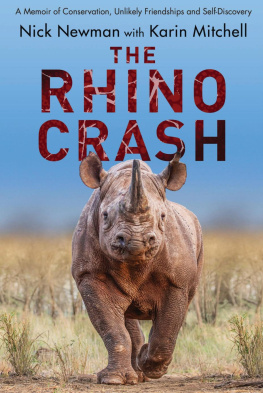
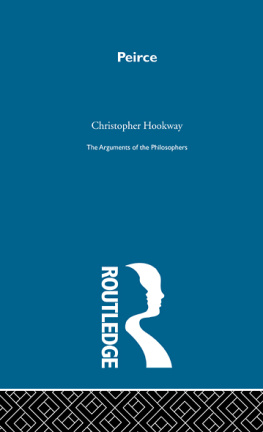



 JACQUI PEIRCE
JACQUI PEIRCE RICHARD PEIRCE
RICHARD PEIRCE